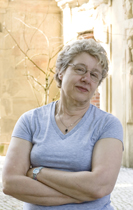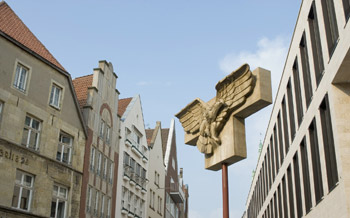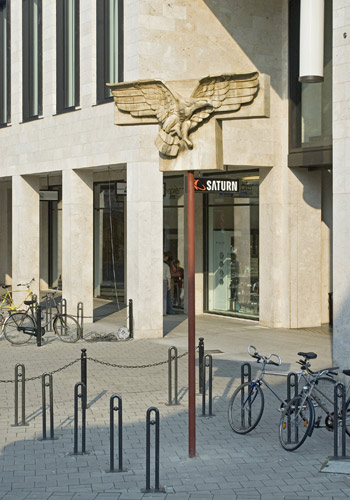news
newsletter
archive
imprint
PawelAlthamer | MichaelAsher | NairyBaghramian | GuyBen-Ner | GuillaumeBijl | MartinBoyce | Jeremy Deller | MichaelElmgreen und IngarDragset | Hans-PeterFeldmann | DoraGarcia |
IsaGenzken | DominiqueGonzalez-Foerster | TueGreenfort | DavidHammons | ValérieJouve | MikeKelley | Suchan Kinoshita | MarkoLehanka | GustavMetzger | EvaMeyer und EranSchaerf | DeimantasNarkevicius | BruceNauman | MariaPask |
ManfredPernice | SusanPhilipsz | MarthaRosler | ThomasSchütte | AndreasSiekmann | RosemarieTrockel | SilkeWagner | MarkWallinger | Clemens von Wedemeyer | AnnetteWehrmann | PaeWhite

* New York City, lives and works in New York City and Malmö

History is painful – a fact that even the most carefully crafted monument cannot convey. Our desire to put memories of suffering behind us often lead to attempts to cover up or eliminate the traces of the past from the urban landscape. However, Martha Rosler asks why history must be portrayed as seamless, for is it not the contradictions that ensure that an urban community remains vital? In an effort to expand our perspectives, the American conceptual artist has transformed Münster into a kind of memory game with architectural symbols where the visitors to the exhibition are to uncover an image and then find its counterpart. The emblem of the eagle of the Air Transport Command of the Wehrmacht built by Ernst Sagebiel in 1935 is also affixed to a pole in front of the Münster arcades, a shopping complex designed by Josef Paul Kleihues. The original cages that were used to display the corpses of leading Anabaptists after their torture and execution in 1536 suspended from the tower of St. Lambert’s Church and from the façade of the municipal library. In turn, the Botanical Garden is home to a bamboo arcade whose counterpart leads from the choir of St. Lambert’s Church to the municipal library. From military to commerce to church to culture and to knowledge – with their architectural fragments, all of these institutions contribute to the urban landscape of today. Because the different parts of her project are located throughout Münster, Martha Rosler has hung information boards on the façade of the municipal library, including an index of all exhibits and their locations. Together, these represent Rosler’s reading of the city.

Martha Rosler's orients her art on concrete political and social themes, and corresponding criticism. She may be compared to John Heartfield, who wanted to criticize and even change current policies through his collages, when she shows the US American expansionist policy in Vietnam and how it contradicts living conditions in the USA in the 1960s and 1970s in „Bringing the War home/House beautiful“. At a very early stage, Rosler confronted urgent topics, e.g. gender issues, racism, and class segregation in various media, video and installations. Her methods and pictorial language are a product of her profound involvement in contemporary theory in philosophy and sociology. Since the 1960s, Rosler has written fictional and non-fictional texts. In the mid-1970s, she combined her research, working as a fast food chain packer, written in diary form, with the performative representation of conceptual art. Her research, along with her interest in aesthetics and the accessibility of public space, led to her curatorial project „If you lived here...“ (1989) concerning the living conditions in New York, in the course of the AIDS crisis and spreading gentrification.